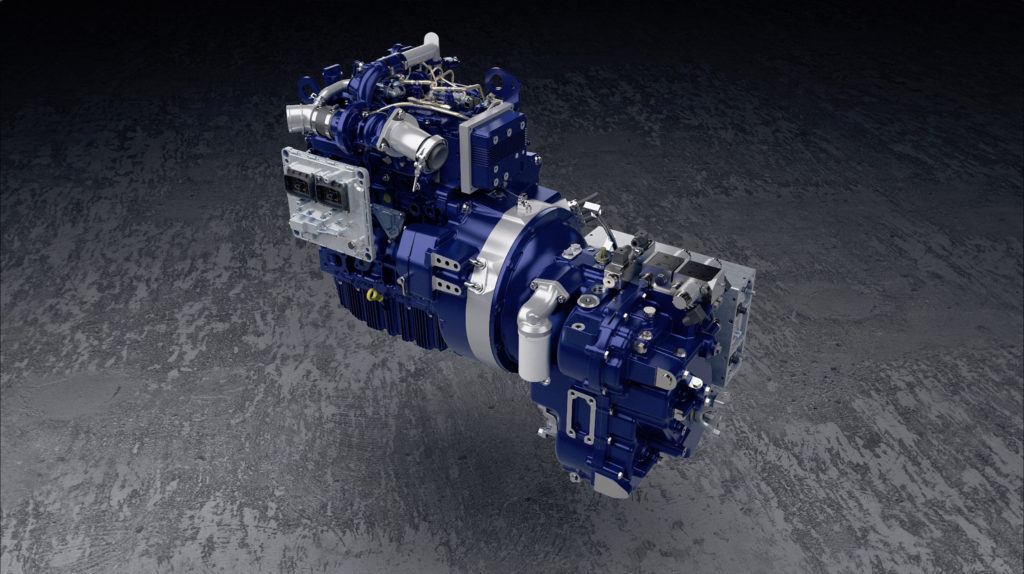Sign up for daily news updates from CleanTechnica on email. Or follow us on Google News!
Despite all the cheerleading for nuclear energy over at the COP 28 climate talks, national security risks have taken center stage ever since Russia launched its unprovoked attack on Ukraine. After almost two years of full-on war, the security and resiliency advantages of wind energy have come into sharp focus, and energy planners in Ukraine are taking notice.
Wind Energy Vs. Nuclear Energy
The 1986 nuclear disaster at the Chornobyl (formerly Chernobyl) nuclear power plant in Ukraine illustrates the kind of lethal security risk to which wind energy is not vulnerable. As described by the Nuclear Regulatory Commission, the death-dealing accident was the culmination of a soup-to-nuts series of human lapses that could have been avoided, beginning with the design phase and continuing right on through to construction, operation, and maintenance.
The 2011 Fukushima disaster in Japan offers another compelling illustration of nuclear vulnerability, with nature as the driving force this time. The impact of the disaster is expected to unfold for another 30 years as contaminated water is released from the site into the ocean, an operation that began this summer.
Circling back to to Ukraine, the country is home to the Zaporizhzhia nuclear power plant, one of the 10 largest in the world. The Nuclear Energy Agency (a branch of the Organization for Economic Co-operation and Development) has chronicled a long series of crises at the plant during the Russian invasion, ranging from direct shelling to loss of staff, along with a permanent interruption of its main water supply.
Although Zaporizhzhia has been the main focus of attention, Ukraine’s other nuclear power plants have also come under attack.
Wind Energy In A War Zone
Against this backdrop, Ukraine has been doubling down on its wind energy resources. It may seem surprising to see a country building new wind farms while defending itself from attack, as the tall, spindly towers seem so vulnerable. However, Ukrainian energy planners have underscored the urgent need for new, resilient energy infrastructure, and wind energy is front and center in the plan.
As noted by the leading Ukrainian energy company DTEK Group, the decentralized profile of wind farms makes them an unattractive target for missile attacks, requiring multiple strikes to fell individual wind turbines. Power lines and substations are more vulnerable, but they certainly don’t carry the potential for a catastrophic follow-on threat if damaged or destroyed, and the repair timeline can be relatively short.
DTEK has been putting words into action. Last May the company revved up operations at Phase I of the new Tyligulska Wind Power Plant, proclaiming it to be the only wind farm in the world to be constructed in a major conflict zone.
The 19-turbine, 114 megawatt array is located from 60 miles from frontline action, near the Black Sea in the Mykolaiv region.
Largest Private Sector Wind Energy Investment Since Independence
If the frontline location of the Tyligulska wind farm sounds like a thumb in the eye of Russia, it probably is. DTEK doubled down earlier this week when it signed an agreement with its wind turbine supplier, Vestas, to deliver another 64 wind turbines for Phase II of the project.
“The [Tyligulska] windfarm project is aligned to the broad development of distributed generation across Ukraine – a concept approved by President Volodymyr Zelenskyy,” DTEK explained in a press statement. “Assets such as wind turbines, which are dispersed over a wide area, have proved to be more resilient during the war.”
When fully built out to a total of 500 megawatts in capacity, Tyligulska will be the largest wind farm in Eastern Europe, producing about 1.7 terrawatt-hours of zero emission electricity per year. As calculated by DTEK, that’s enough for 900,000 households.
Adding financial significance to the Vestas announcement, DTEK notes that Phase II represents the “largest private investment project” in the Ukrainian energy sector since the nation gained independence, topping out at 450 million euros financed by itself and financial firms.
The Wind Energy Advantage, Beyond War
Ukraine is already looking ahead to a green recovery, enabling it to join the EU as a maker, not a taker. The country expects to become a leading force in decarbonizing the European energy profile with wind energy and other renewable resources, including its copious stock of biomass. Green hydrogen is also in the mix.
“The Tyligulska windfarm project was developed in accordance with the company’s long-term strategy to achieve carbon neutrality and integration into the single energy market of the European Union, approved by DTEK shareholder Rinat Akhmetov,” DTEK explains.
Attracting private sector investors is a key part of the plan. “Believing in our victory, we will not wait for the end of the war to attract Western or our own capital to create new infrastructure,” said DTEK CEO Maxim Timchenko. “This is further evidence of Western investors’ strong confidence in DTEK Group as responsible partner in Ukraine. Today, we are busy restoring not only what the occupier is destroying, but also building a new energy system and new power plants.”
“The Tyligulska windfarm will significantly increase the stability of our energy system, help strengthen the country’s energy security, and enable Ukraine to become a decarbonisation leader that can act as an energy hub for Europe,” Timchenko emphasized.
What About The Nukes?
Yes, what about them. The Ukrainian clean energy advocacy group Razom We Stand cites new research indicating that Ukraine can replace its existing fleet of nuclear power plants with “more competitive alternative energy sources” by 2050.
“Due to significant capital costs for construction, the long term (7-10 years) for commissioning and the constant unpredictable increase in the cost of nuclear power generation projects, it loses its competitiveness with other types of electricity generation,” the group states, referring to a study undertaken by the Institute of Economics and Forecasting at the National Academy of Sciences of Ukraine under the title, “What is the future of nuclear energy in Ukraine? The role of war, technical and economic factors and security considerations.”
The founder and Director of Razom We Stand, Svitlana Romanko, did not mince words over the finding. “Political and business elites are trying to prolong the life of the nuclear industry, inject public investment into it and delay a just transition to clean energy by manipulating technologies and untested solutions such as small modular reactors (SMRs),” she said.
“Like fossil fuels, nuclear energy is a geopolitical weapon and a source of danger. From last March until today, every Ukrainian family has been asking themselves and the world – whether hiding in the basement will save us from an explosion at the Zaporizhzhia NPP,” she added. “In order to disarm dictators and win a real energy victory, we must direct public and private investments in renewable energy and small distributed generation.”
Razom and other renewable energy advocates around the world will be gearing up for a fight. Earlier this week at COP 28, about 20 nations including endorsed the new “Declaration to Triple Nuclear Energy.”
The Declaration sets a goalpost of 2050 to achieve the tripling mark, though that may be somewhat overly ambitious considering the long timeline generally needed for nuclear construction, whether at existing nuclear facilities sites or at new sites. The rising threats of water scarcity, heat, extreme weather and other climate impacts could also complicate matters.
Nevertheless, Ukraine signed onto the Declaration along with the US, Bulgaria, Canada, Czech Republic, Finland, France, Ghana, Hungary, Japan, Korea, Moldova, Mongolia, Morocco, the Netherlands, Poland, Romania, Slovakia, Slovenia, Sweden, the United Arab Emirates, and the UK, so stay tuned for more on that.
Follow me @tinamcasey on Bluesky, Threads, Post, and LinkedIn.
Photo: Ukraine is taking advantage of its wind energy resources during wartime, and after (courtesy of DTEK).
Have a tip for CleanTechnica? Want to advertise? Want to suggest a guest for our CleanTech Talk podcast? Contact us here.
CleanTechnica Holiday Wish Book
Our Latest EVObsession Video
I don’t like paywalls. You don’t like paywalls. Who likes paywalls? Here at CleanTechnica, we implemented a limited paywall for a while, but it always felt wrong — and it was always tough to decide what we should put behind there. In theory, your most exclusive and best content goes behind a paywall. But then fewer people read it!! So, we’ve decided to completely nix paywalls here at CleanTechnica. But…
Thank you!
CleanTechnica uses affiliate links. See our policy here.




